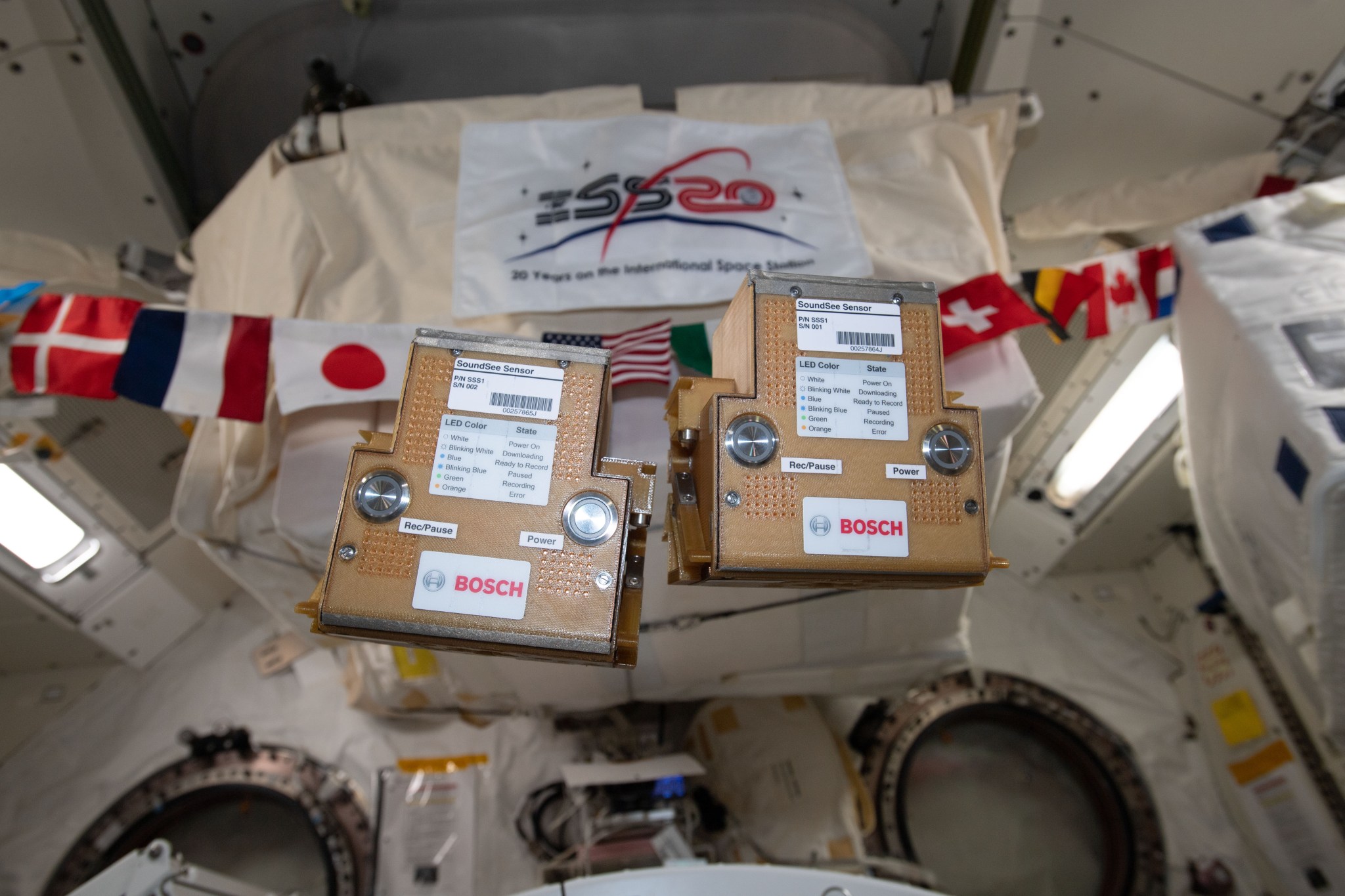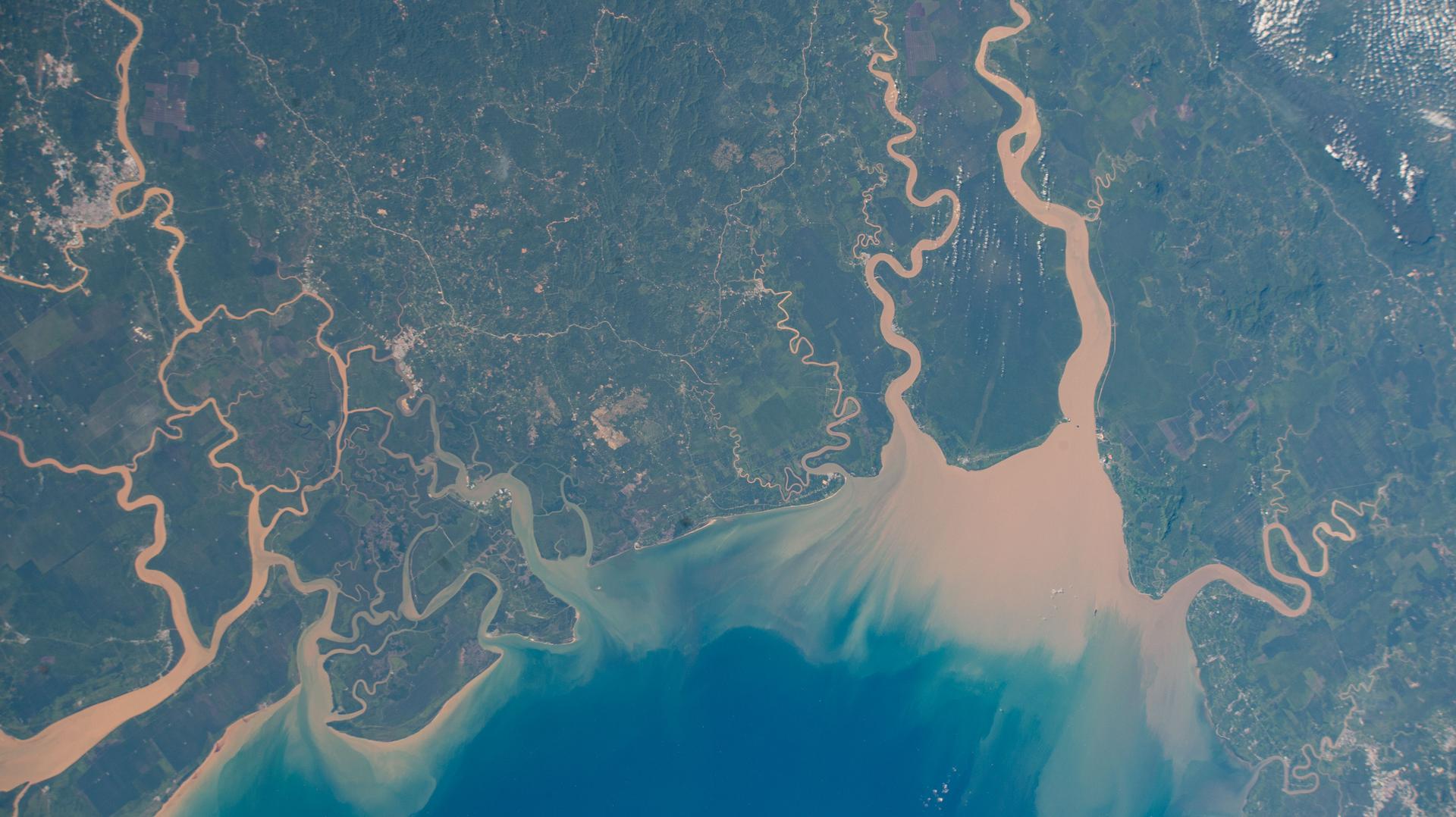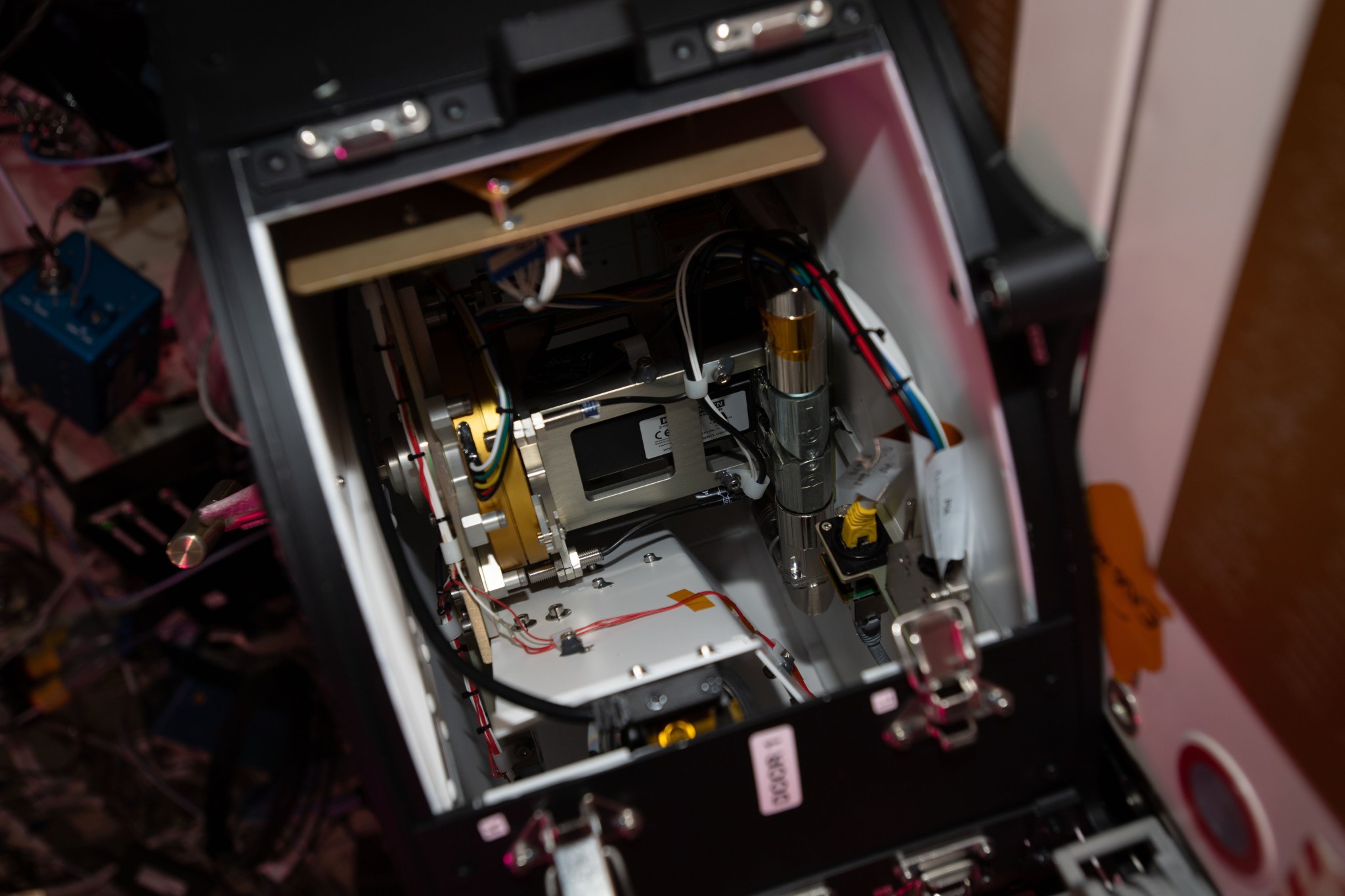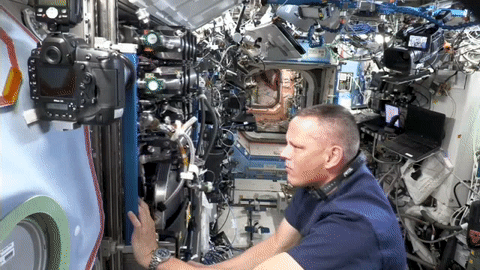Lee esta historia en español aquí.
Crew members aboard the International Space Station conducted scientific investigations during the week of June 13 that included autonomous monitoring of equipment acoustics, analyzing sloshing and turbulence in liquids, and testing a fiber optic radiation dosimeter.
Here are details on some of the microgravity investigations currently taking place on the orbiting lab:
Sounds good
The SoundSee Mission, sponsored by the ISS National Lab, tests using an audio sensor on Astrobee to monitor the station’s acoustic environment. Microphones collect acoustic information, and the free-flying Astrobee robot determines the sensor’s position. Monitoring sound can provide early indication of equipment failure, improving crew health and safety by keeping life support and exercise equipment in good working order and reducing crew workload. Autonomous audio monitoring of equipment on Earth has potential applications in manufacturing, home settings, health care, and infrastructure development. The crew prepared the Astrobee and conducted operations for SoundSee during the week.

Liquid management
An investigation from ESA (European Space Agency), FLUIDICS uses liquid-filled spheres to observe and analyze sloshing and wave turbulence. A better understanding of liquid sloshing in a tank in microgravity could improve the guidance and precision of satellites and optimize the life spans of these craft through better fuel management. Wave turbulence at the surface of liquids is affected by gravity on Earth, but in microgravity, scientists can study only the liquid’s surface tension. Examining wave turbulence could provide insights into measuring the volume of liquid in a sphere and improve the ability to determine how much fuel is left in a tank. On Earth, results from this investigation could provide a better understanding of Earth’s oceans, help improve climate prediction systems, and optimize the use of ocean-based renewable energy. During the week, crew members initiated runs of the experiment.
Illuminating radiation dose
Lumina, an ESA investigation, demonstrates a dosimeter that uses optical fibers to monitor the radiation dose received by crew members. The fibers darken when exposed to radiation, providing reliable measurements in complex radiation environments. Monitoring radiation is a key capability for future longer-term space exploration, and this technology could help protect crew members by enabling them to anticipate and respond to potentially dangerous radiation flares. This technology also has potential applications in the medical and nuclear industries on Earth. During the week, crew members collected and transferred data from the Lumina device.
Other investigations involving the crew:
- Touching Surfaces, an ESA investigation, tests antimicrobial surfaces to help determine those most appropriate for future spacecraft and habitats as well as for terrestrial applications such as public transportation and clinical settings.
- Mochii demonstrates a miniature scanning electron microscope to measure tiny particles that can cause vehicle and equipment malfunctions and threaten crew health. Currently, samples must be returned to Earth for analysis, which can take several months. This technology could enable rapid identification of particles, helping to keep crews and vehicles safe on future missions.
- The Combustion Integrated Rack (CIR) provides a platform for combustion investigations in microgravity. These include studies on fuel efficiency, extinguishing flames, and control of soot.
- XROOTS uses hydroponic (liquid-based) and aeroponic (air-based) techniques to grow plants without traditional growth media, which could enable production of crops on a larger scale for future space exploration.
- Actiwatch Spectrum is a monitor worn on the wrist of a crew member that measures motion and ambient lighting to analyze the wearer’s circadian or daily rhythms, sleep-wake patterns, and activity. Data on how much crew members sleep and how much light they are exposed to throughout the mission could help define light requirements, sleep protocols, and workload plans to maximize crew health and performance on future exploration missions.
- Transparent Alloys – METCOMP, an investigation from ESA, uses specific organic materials that solidify like a metal yet remain transparent so researchers can examine the alloy solidification process. Alloys are used in a wide variety of applications from smartphones to aircraft, and lighter, stronger versions could benefit consumers and industry.
- ISS Ham Radio provides students, teachers, parents, and others the opportunity to communicate with astronauts using amateur radio units. Before a scheduled call, students learn about the station, radio waves, and other topics, and prepare a list of questions on topics they have researched.
The space station is a robust microgravity laboratory with a multitude of specialized research facilities and tools. Over more than two decades of continuous operation, it has supported many scientific breakthroughs from investigations spanning every major scientific discipline. The orbiting lab conveys benefits to future space exploration, advances basic and applied research on Earth, and provides a platform for a growing commercial presence in low-Earth orbit.
For daily updates, follow @ISS_Research, Space Station Research and Technology News or our Facebook. Follow ISS National Lab for information on its sponsored investigations. For opportunities to see the space station pass over your town, check out Spot the Station.
John Love, ISS Research Planning Integration Scientist
Expedition 67




























